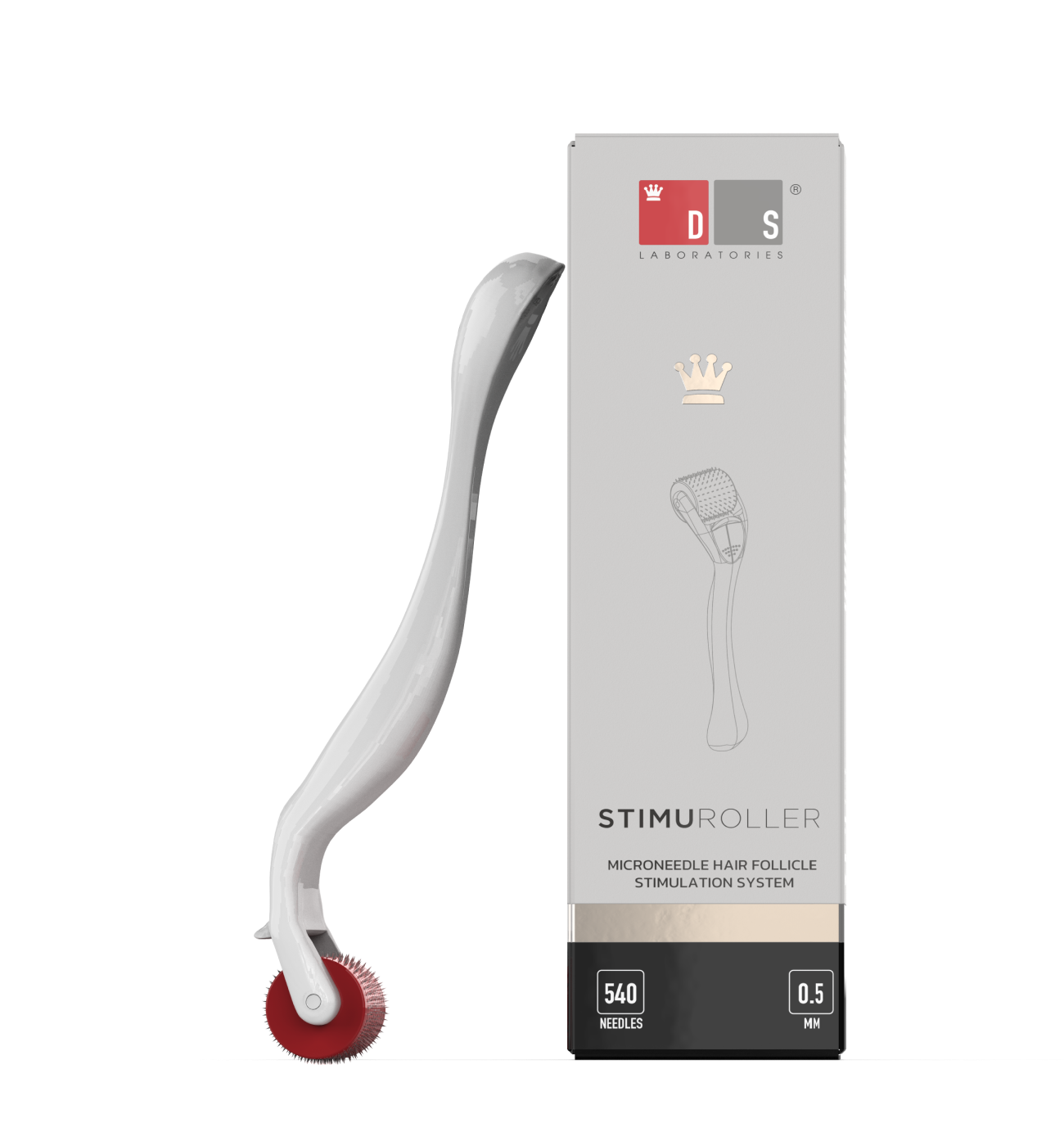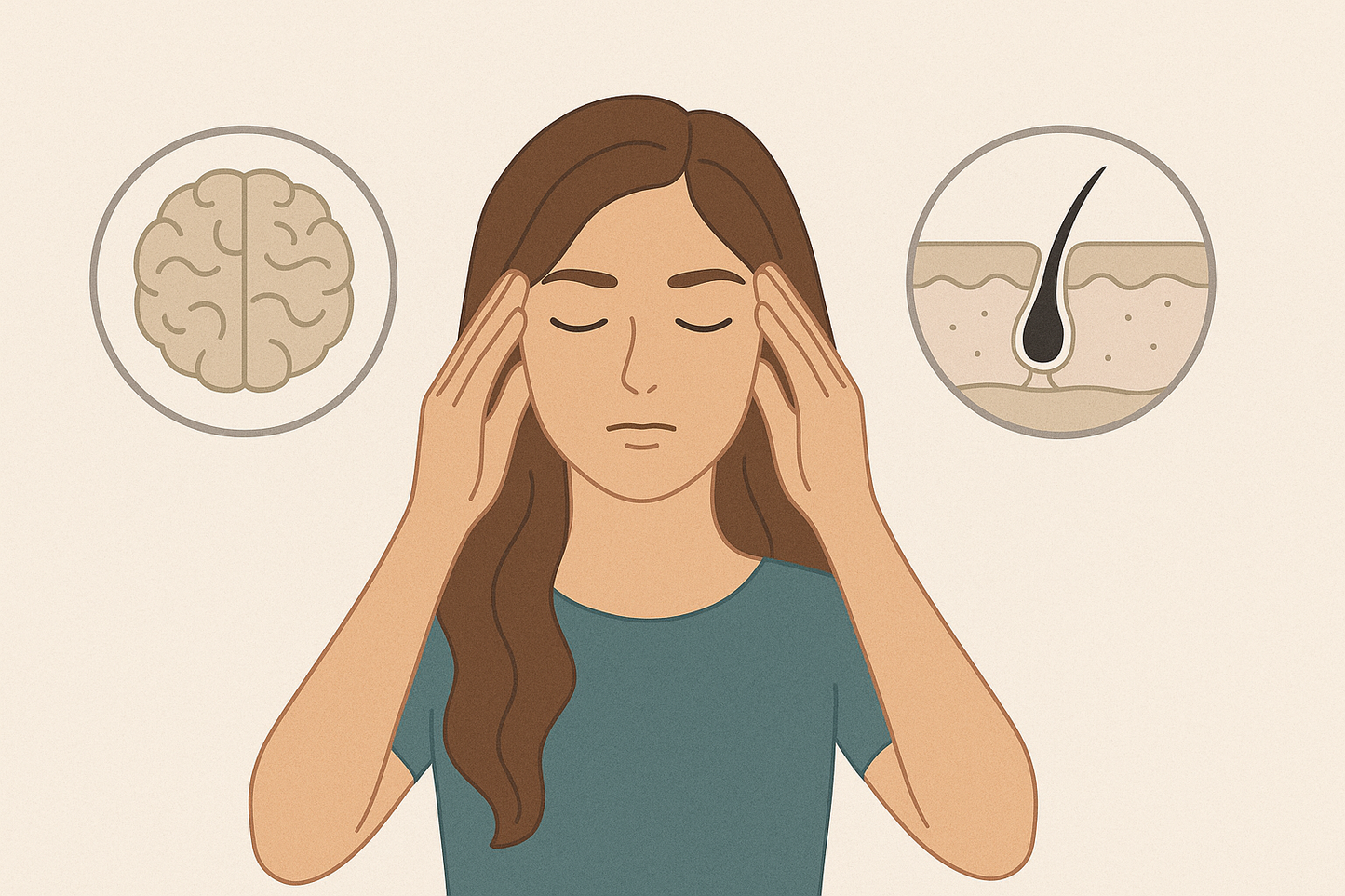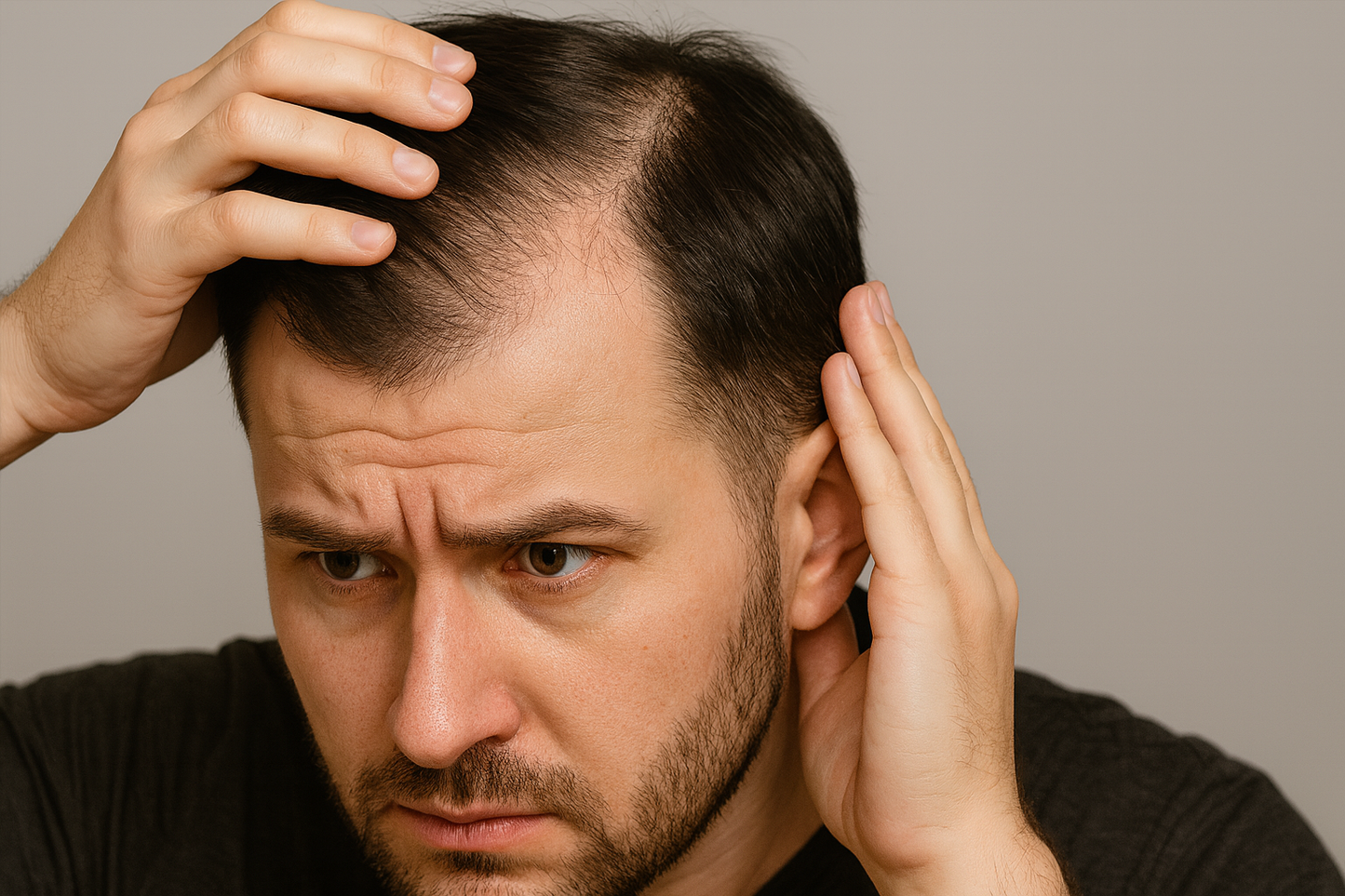Are you alarmed by the number of hair strands left on your brush, shower drain, or pillowcase? Hair loss can affect one’s confidence and even be a cause of embarrassment.
If you’re worried about hair loss, know that identifying its root cause can help you reduce the number of strands falling from your head.
In this article, we’ll give you a brief background about hair loss and its different types so you can better pinpoint what’s causing it. Remember, however, that the best treatment plan for hair loss is one that you come up with in partnership with your doctor.
Hair Growth Cycles
There are four stages of the hair growth cycle:
- Anagen, aka the growth phase, is the longest phase. It can last anywhere between 5 to 10 years. During the anagen phase, new hair grows from the hair follicles until they reach the next phase of the growth cycle.
- Catagen, aka the transitional phase, typically lasts for 10 days or so, although it can stretch to 2 to 3 weeks as well. At this stage, hair follicles shrink, and hair stops growing, causing them to separate from the follicles that keep them rooted in place.
- Telogen, aka the resting phase, lasts 3 to 4 months on average. When your hair is in this phase, it won’t grow but it won’t shed either.
- Exogen, aka the shedding phase, can last anywhere between 2 to 5 months. Hair is shed from the scalp, making way for new hair growth.
What Causes Hair Loss?
Hair loss, also known as alopecia, is a type of disorder that happens due to an interruption in the body’s hair cycle — be it on the scalp or other parts of the body. It can be caused by genetics, hormonal changes, medical conditions, and aging.
When your body's natural hair growth cycle is disrupted, it causes your hair to fall out faster than the body’s hair production cycles, leading to hair fall. It's usually temporary but can become permanent if left untreated.
Types of Hair Loss
Knowing the cause of your hair loss and the medical terms for different types of hair loss can help you get better treatments. Here are some of the most common types of hair loss:
Alopecia Areata
Alopecia areata is an autoimmune disorder that attacks your hair follicles, causing your hair to fall out. It also prevents new hair from growing.
This condition begins suddenly — and usually affects the scalp and face. People report losing hair in small patches from the scalp, and some even experience hair loss in other parts of the body such as their eyebrows and eyelashes.
Anagen Effluvium
Anagen effluvium is a non-scarring form of hair loss associated with chemotherapy, which is why it is often referred to as chemotherapy-induced alopecia.
How does it happen?
Well, the potent drugs — which include antimetabolites and mitotic inhibitors — used to kill cancer cells can cause the hair shaft to fracture. It can also mess with the natural hair follicles’ production cycles.
One may experience hair shedding within 14 days of chemotherapy, but hair growth is typically reversible.
Androgenetic Alopecia
Androgenetic alopecia, also known as male and female pattern hair loss, is the most common type of hair loss. It is hereditary but it can be managed with treatments.
- Male Pattern Hair Loss: It typically starts during the teenage years and intensifies as one ages. The hair loss pattern is pretty predictable: Affected individuals notice gradual thinning at the temples which can cause permanent balding in time.
-
Female Pattern Hair Loss: It causes thinning of the hair, which is very noticeable at the center part. It does not cause a receding hairline — except for the normal recession — and rarely leads to balding.
Telogen Effluvium
Telogen effluvium is a type of diffuse hair loss that happens when a large number of hair follicles are forced into the telogen phase (or the resting phase of hair growth) 2 to 3 months after a stressful event.
The loss of hair can be aggravated by hair follicles that don’t immediately move into the growth phase.
That said, the condition is temporary. Affected individuals may notice hair growth after around 6 months. However, if you’re dealing with chronic telogen effluvium, recovery may take longer than usual.
Traction Alopecia
Did you know that the way you style your hair can also lead to hair loss?
Tight hairstyles such as ponytails, braids, and cornrows can put pressure on your scalp and cause traction alopecia. This type of hair loss is caused by hair being pulled back too tightly. Repeated strain may eventually lead to thinning hair, bald spots, and even permanent hair loss.
The solution for traction alopecia is simple: just change your hairstyle to something looser and more relaxed.
Trichotillomania
Trichotillomania, also known as a hair-pulling disorder, is a type of hair loss associated with the constant and uncontrollable urge to pull out one’s own strands. Typically, the hair on the scalp is affected although hair pulling can also happen on other parts of the body such as the eyebrows and eyelashes.
Hair strands typically regrow after being pulled out but if the behavior continues, it could lead to permanent hair loss.
Wrapping Up
We’ve listed the most common types of hair loss, but the list is by no means comprehensive. If you’re losing more than 50 to 100 strands a day, consult a trichologist as soon as possible to understand what is causing it and what treatments can reverse it.
Getting targeted treatments early can help you address underlying issues and avoid permanent hair loss.













